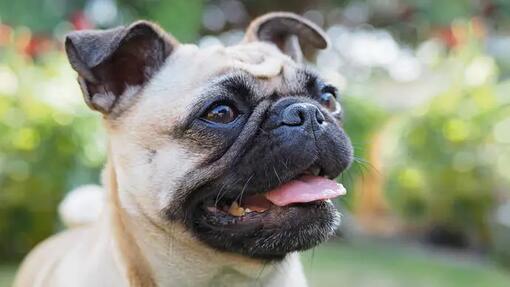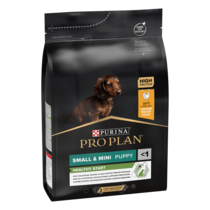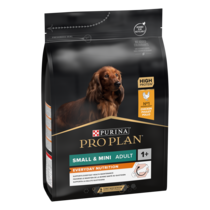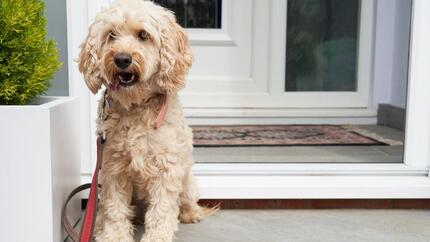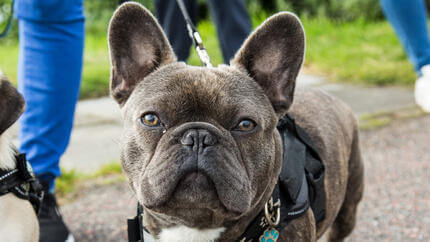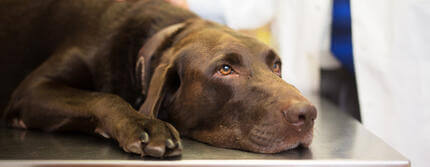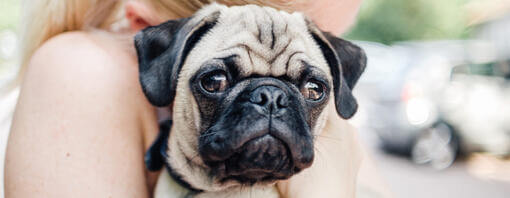
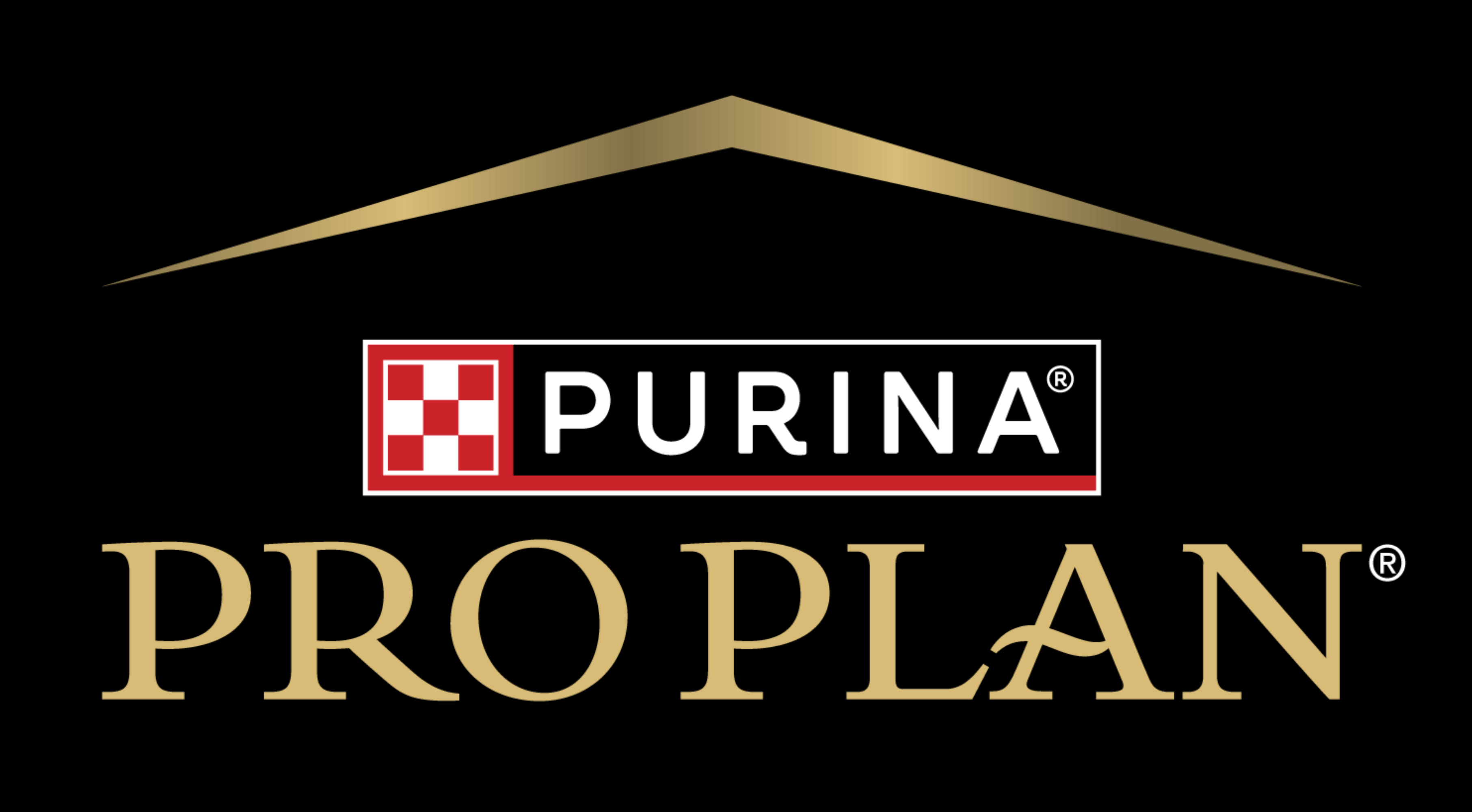
Pugs are so easy to love. They’re intelligent, have a sweet nature and bring plenty of humour to households. They also have huge personalities that somehow manage to fit into their small statures.
You might not guess it when you see them strutting confidently around the house, but some of the characteristics that make them so endearing might cause certain health conditions that are typical for these little fellows. This doesn’t make them any less loveable, but owners should be aware of the specific Pug health problems. The sooner the symptoms are recognised and treatment can be offered, the quicker your dog can go back to being the awesome pups they are.
The 9 most common Pug health problems you should know about
Brachycephalic obstructive airway syndrome (BOAS)
The compressed noses are part of the charm of Pugs, but they can also lead to breathing difficulties and an inability to easily cool down, also known as brachycephalic syndrome. The anatomy of Pugs gives them one of the cutest faces in the canine world.
However, narrow nostrils, an elongated soft palate and sometimes even a narrow windpipe might make them prone to developing BOAS. All of these characteristics lead to a common issue: your pup might have a tough time getting air into its lungs in the quantity its body needs. This problem will usually be worse in summertime, because this restricted air flow means it’ll be harder for your dog to properly cool off.
BOAS is a common Pug health problem owners should be aware of. If your dog often needs to stop while out on their daily walk, makes loud noises when breathing, or has blue gums due to low oxygen levels, make sure you ask your vet for an appointment. Early intervention is key and will give your dog the best chance of getting the treatment they need to live a happy, normal life.
Pug eye ulcers and eye infection
Unfortunately, eye problems are on the list of things to look out for if you have a Pug in the family. Some of the problems may be inherited, but Pugs might also run into trouble by themselves while playing. This is because their protruding eyes make it much easier for them to get eye injuries, especially given their fun-loving personalities and tendency for mischief. Eye ulcers in Pugs come accompanied by a red cornea and teary eyes, so look out for these symptoms and contact your vet as soon as possible if you detect them.
Other eye problems Pugs might have are dry eyes, infections, or eye abnormalities such as entropion—a hereditary eye condition.
Patella luxation
Patella luxation happens when the kneecap moves out from its groove, causing limping and sometimes pain. This Pug health problem can be the result of a hereditary malformation, although it can also appear after an injury. Fortunately, surgery will usually help your dog live their life free of pain, but owners should keep monitoring their Pugs to make sure their exercising or playing is not overly strenuous. You should also keep their weight in check to reduce the pressure on their joints.
Hip dysplasia
Although canine hip dysplasia is usually a problem in big dogs, unfortunately, smaller pooches like Pugs can also end up at the vet with this condition too. This happens if their hip has not developed properly and its ball and socket joint doesn’t fit well together. The condition is inherited, and most pups are diagnosed with this problem between 6 and 12 months of age. Limping, bunny hopping, or stiffness are common symptoms of hip dysplasia that every owner should be aware of.
Encephalitis in Pugs
Encephalitis is a word that terrifies dog owners. This is a fatal condition specific to Pugs that is still not well-understood. Affected dogs will usually have seizures, run in circles, become blind, and will ultimately fall into a coma before succumbing to the disease. It is likely that this condition is hereditary. However, seizures can have many different causes such as epilepsy, so always take your dog to the vet if they’re starting to experience symptoms.
Hemivertebrae
Pugs might also experience spinal problems such as hemivertebrae due to their screw-tail. Abnormally shaped vertebrae put pressure on the spinal cord which can cause pain. You should also look out for incontinence and problems with their back legs. The vet will be able to diagnose this Pug health problem using X-rays and depending on the results, will recommend either drugs or surgery to correct the abnormal vertebrae.
Skin conditions
The signature skin folds of Pugs make them instantly recognisable all over the world, but they’re also prone to hosting all sorts of bacteria and parasites. Dog skin conditions such as demodectic mange are caused by a mite and show up as skin lesions, redness and hair loss.
It’s important to keep your dog’s skin as clean as possible, including the numerous folds they always seem so proud to show off.
Allergies
Pugs are also sensitive and so they frequently have allergies which will often manifest as a skin condition. If your dog is constantly scratching, rubbing or licking their skin, it’s time to ask your vet for a diagnosis. A simple allergy can quickly turn into an infection which will cause your Pug’s health problems to multiply. Fortunately, dog allergies are easily treated.
Legg-Perthes disease
This is another disease that affects the hip bone in Pugs. Due to a poor blood supply, the bone can disintegrate and cause pain and limping. Legg-Perthes disease usually appears in young pups and can be corrected by surgically removing the affected part of the bone. New tissue will grow to partially replace it, forming a ‘false’ hip joint. Luckily, soon after surgery and with a bit of physiotherapy, your dog will be back to their happy self without experiencing pain anymore.
It can be a bit scary to go through a list of possible Pug health problems. The good news is that as long as owners are aware of the signs to look out for and are ready to ask their vet for help as soon as possible, their dog has a good chance of getting through most of these issues and continuing their usual adventures.
Plus, just because certain health problems are associated with our lovely Pugs, it doesn’t mean that your dog will definitely be affected. Many Pugs live most of their lives going to the vet just for regular check-ups. So, if you’re a Pug enthusiast don’t hesitate to welcome this awesome dog into your life and if you’re already the lucky owner of a Pug, in between your cuddles and fun play time, keep an eye out for any unusual symptoms. Find out more about the amazing Pug breed with our handy guide.
Discover our dog food:
Related articles



